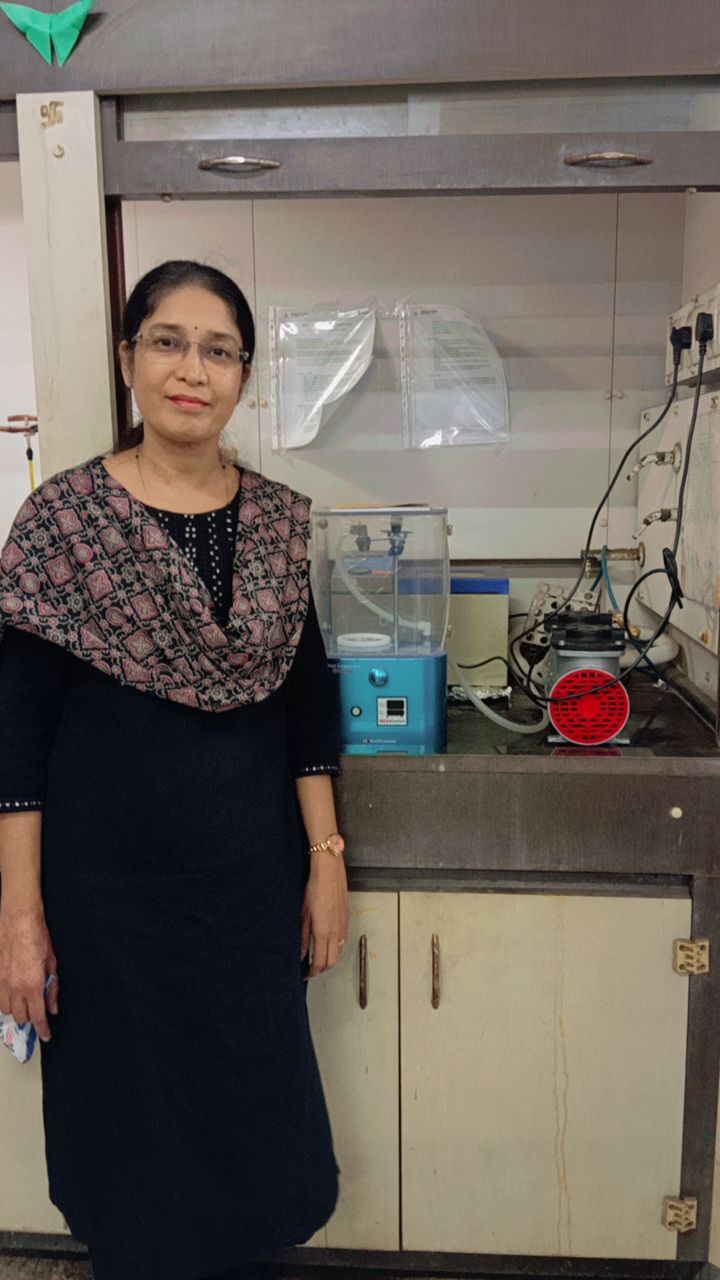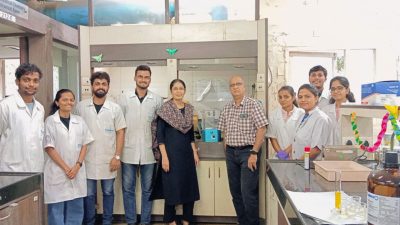Testimonial from Bombay College of Pharmacy
FROM: Premlata Ambre, PhD HOD, Associate Professor of Pharmaceutical Chemistry,
Bombay College of Pharmacy, Autonomous Santacruz East, Mumbai: 400098
My Research Activity
In our Pharmaceutical Chemistry department, the research projects encompass a broad spectrum, including the synthesis of small molecules, polymer and macromolecule synthesis, deuterated chemistry, purification, and identification of structures using various techniques such as FTIR, NMR, melting and boiling point analysis. Additionally, we engage in formulation development and pharmacological studies.
Given the diverse applications, we find the need for a sophisticated evaporator to concentrate products and facilitate efficient drying to prevent hydrolysis of the synthesized materials. Our analytical methods involve the use of 1H-NMR and mass spectrometry, UV and HPLC for identifying purity and any potential impurities.
The instrumental utility of the "Smart Evaporator" has been significant in our work, especially in the final drying of synthesized materials. This involves the evaporation of volatile solvents such as Ethanol, Acetone, 1,4-dioxane, Ethyl acetate, hexane and nonvolatile /high-boiling solvents like Water and DMSO.
During the previous year, Mr. Keiyu Aihara (Country Head of BioChromato), Mr. Ota, Technical Expert, BioChromato and Mr. Sudarshan Mishra (Sr. General Manager-Sales, ANATEK) visited our institute. They played a crucial role in enlightening us about the importance of the Smart Evaporator and conducted a demonstration highlighting the distinctions between a standard rotary evaporator and the advanced Smart Evaporator.

Our Process
Typically, we must dry the synthesized and purified New Chemical Entity (NCE) before subjecting it to H-NMR and MS analysis. The Smart Evaporator proves invaluable in this process, as it ensures thorough drying of the compound without trapping any moisture while evaporating the solvent from the NCE. This final drying step is crucial as it precedes structural elucidation, stability studies, and investigations related to biological processes for the compounds.
Conditions Maintained for Evaporation
For higher boiling solvents, the temperature was set at around 80oC and for volatile or normal boiling solvents the temperature setting is at 30-50o C
a. Installation Place: Fuming chamber
b. Solvent type: volatile and non volatile
c. Solvent amount: 15-20mL
d. Vial type: Borosilicate glass vial or RBF
e. Vial volume: 20-30mL
f. Temperature For higher boiling solvents, the temperature was set at around 80oC and for volatile or normal boiling solvents the temperature setting is at 30-50oC
g. Concentration frequency: twice or thrice in a day
TIME REQUIRED: 10-20mins
ADVANTAGES OF BIOCHROMATO SMART EVAPORAOR
- The Smart Evaporator is highly efficient and superior for the final drying of synthesized intermediates or New Chemical Entities (NCE).
- It significantly reduces the time required for evaporation of organic solvents compared to a rotary evaporator.
- The Smart Evaporator allows for the evaporation of DMSO, a capability not achievable with a traditional rotary evaporator. This makes the Smart Evaporator advantageous for samples that require purification using challenging solvents such as DMSO or water.
- Smart Evaporator mechanism is unique and efficient. There is a special slit (groove) cut on the Spiral Plug. Gas from the surrounding air enters the container through the slit as the vacuum pump starts the suction. Inside the vessel, the entering gas travels in a spiral pattern, creating internal airflow.
The instrument is equipped with various-sized spiral plugs as accessories, that eliminates the restrictions on the size or shape of the flask during use. This flexibility allows for the use of various capacities of conical flasks or round-bottom flasks, preventing product loss during transfer.
We would appreciate the inclusion of the following features in a Smart Evaporator:
- An indicator or alarm signaling the completion of drying after solvent evaporation.
- We suggest reducing the size of the beads to enhance heat transfer efficiency to the vials/ flasks.
We used to generally concentrate the samples by using Buchi / Roteva make rotary evaporators or Nitrogen evaporator.
OBSERVATIONS
We observed significant improvement in the evaporation Technique.
BioChromato Smart Evaporator demonstrates high efficiency, requiring less time for the evaporation of organic solvents compared to a rotary evaporator. The dried samples obtained are devoid of moisture, ensuring stability and immediate usability.
In contrast to our previous method, which involved evaporating the solvent from the sample and subsequently drying it in a vacuum desiccator for 24-48 hours before structural elucidation, the Smart Evaporator streamlines and expedites this process.

